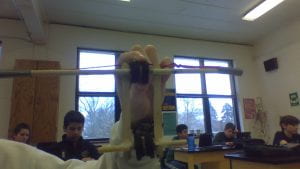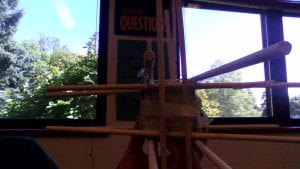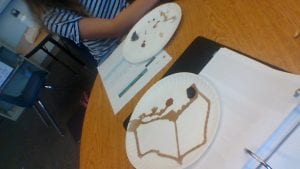1. Given the challenge and the performance of your car on Test Drive #1, what change(s) will you make for Test Drive #2? We changed or the whole design. We extended our crossing bar to make room for a bigger and more stretchy rubber band.
2. What differences did you predict these changes would make in your car’s performance? What makes you think this? We knew it was going to go way further than the first iteration because in our first iteration we had no clue what we were doing and how the spools affected the movement of the racer.
3. Think about the variables such as the size of the spool, weight of the washer or tension of the rubber band. How might these affect how far or how fast your car will go? the weight would affect the racer greatly. If our racer was heavier it might have gone a little further or back. Depending on the elastic energy we would have gone further say if we had a stretchier rubber band.
4. What worked better the second time? The stretchiness of the rubber band really helped. It also helped to have an actual plan, not a dream that isn’t going to happen. On top of that, this time we were taking the whole project more seriously.
5. What still is not quite working? Nothing doesn’t work, it just doesn’t go as far as we would like it to go.
6. What questions do I have? None.
7. What might I try next? I would extend our rubber bands by connecting more to a rubber band for maximum elastic energy.
8. Explain the energy transfer that is taking place in the racer. The elastic energy is converting into kinetic energy.




